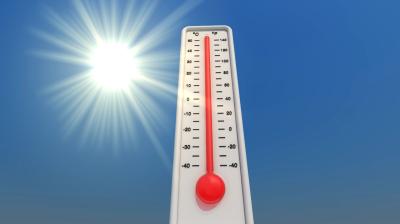UN Security Council holds session on sea level rise
The UN Security Council held its first ever debate on the global implications of sea level rise. UN Secretary-General António Guterres cited WMO figures that the rate of sea level rise is accelerating. This will continue in future, with a major impact on the fabric of society.

Rising seas pose “unthinkable” risks to billions around the world, with profound implications for the very fabric of societies, United Nations Secretary-General António Guterres told the Security Council’s first-ever debate about the global implications of sea level rise.
“The impact of rising seas is already creating new sources of instability and conflict,” said UN Secretary-General António Guterres, who opened the meeting.
Noting that some nations’ coastlines have already seen triple the average rate of sea level rise, he warned that, in the coming decades, low-lying communities – and entire countries – could disappear forever.
“We would witness a mass exodus of entire populations on a biblical scale, and we would see ever-fiercer competition for fresh water, land and other resources,” he warned.
‘Threat multiplier’
Describing sea level rise as a threat multiplier, the Secretary-General said the phenomenon also jeopardizes access to water, food and healthcare.
Meanwhile, saltwater intrusion can decimate jobs and entire economies in industries like agriculture, fisheries and tourism, and it can damage or destroy vital infrastructure, such as transportation systems, hospitals and schools.
He cited information from WMO reports showing the acceleration of global average sea level rise.
“Global average sea levels have risen faster since 1900 than over any preceding century in the last 3,000 years. The global ocean has warmed faster over the past century than at any time in the past 11,000 years, » he said.

"Meanwhile, the WMO tells us that even if global heating is miraculously limited to 1.5 degrees, there will still be a sizeable sea level rise,” said Mr Guterres.
The rate of sea level rise has doubled since 1993. It has risen by nearly 10 mm since January 2020 to a new record high in 2022, according to WMO’s provisional State of the Global Climate in 2022 report. The past two and a half years alone account for 10 percent of the overall rise in sea level since satellite measurements started nearly 30 years ago.
Although this is still measured in terms of millimetres per year, it adds up to half to one meter per century and that is a long-term and major threat to many millions of coastal dwellers and low-lying states.
Mr. Guterres warned the Security Council that, under any temperature rise scenario, countries from Bangladesh to China, India and the Netherlands will all be at risk. Mega-cities on every continent will face serious impacts. The danger is especially acute for some 900 million people living in coastal zones at low elevations –one out of every ten people on earth.
The 2019 Special Report on the Ocean and Cryosphere in a Changing Climate by the Intergovernmental Panel on Climate Change, which is co-sponsored by WMO and the UN Environment Programme, issued assessed observed changes and impacts, projected changes and risks, and implementing responses to ocean and cryosphere change. Sea level rise will also be addressed in the forthcoming IPCC AR6 Synthesis Report.
Csaba Kőrösi, the current President of the General Assembly, also addressed the Council, recalling that climate change – “the greatest challenge of our generation” – was the issue most raised by world leaders during the Assembly’s last high-level debate.
Citing projections that between 250 and 400 million people will likely need new homes in new locations in fewer than 80 years, he also warned of devastating impacts for the world’s “breadbaskets,” especially fertile deltas along the Nile, Mekong and other rivers.
“What is needed now – as ever – is the political will to act,” he said.
A direct link to the report can be found HERE.










